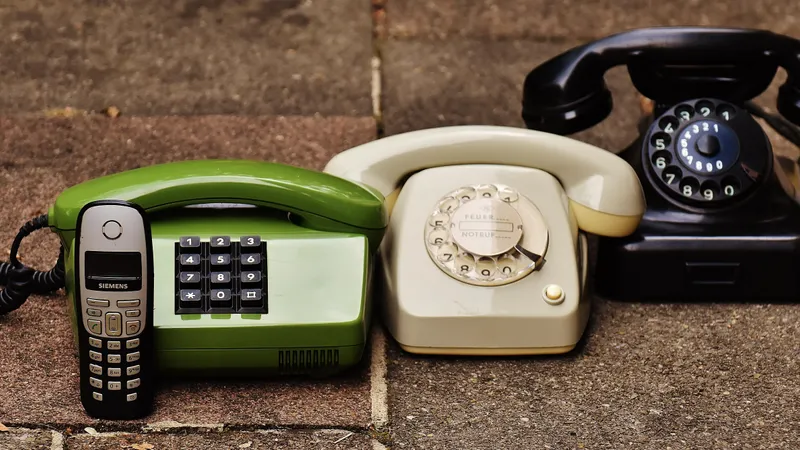Add, remove & assign phone numbers on demand
Manage, respond to, and share calls with your team
Send & receive any message you need to
Keep contact details in one place with a shared phonebook
For on-the-go teams to share messages, calls, and contacts
A full directory of all our included features

Transform your business: The future of business phones

The telephone has influenced all aspects of our lives, from relationships to commerce, healthcare to education and public administration. With smartphones, business phones and even the internet-led second phone numbers for business, the future looks exciting for this marvellous machine.
But before we get to what the future holds, let’s understand how it all started.
The invention of the telephone
Who invented the telephone is a hotly debated question. The idea for the telephone emerged as various individuals tried to improve the electrical telegraph. Englishman Francis Ronalds built the first telegraph in 1816. Fewer than six decades later, Alexander Graham Bell invented the first functional telephone.
But Elisha Gray and Antonio Meucci were also credited with the invention. Thomas Edison’s invention of the carbon microphone to produce a strong telephone signal was also a decisive step in the invention of the technology. While Bell and Edison received patents, there were claims, counterclaims and controversies surrounding the invention of the telephone.
The telephone exchange
The earlier versions of the telephone can be best described as an extended intercom. Users were directly connected to each other, such as a residence and its owner’s office or business. That changed when Tivadar Puskas, the Hungarian engineer devised the telephone exchange.
On 28 January 1878, the first telephone exchange came into being in New Haven, Connecticut with 21 subscribers. But by 1904, the United States had over three million phones connected by exchanges.
Mobile phones
Since the early 20th century, engineers and researchers from various countries had been working on creating a wireless telephone system. Most notably in Germany, wireless telephony on military trains was tested from 1918. By the middle of the century, radiotelephony through hand-held radio transceivers was introduced.
It was in 1947 that Douglas H. Ring and W. Rae Young, both engineers at the Bell Labs, suggested hexagonal cells for mobile telephony. In 1956, Sweden witnessed the launch of the first fully automated mobile phone system.
It wasn’t until 1973, when Martin Cooper, a researcher at Motorola, who would go on to have eleven patents, used a handheld phone to make a mobile phone call and changed the world. Since then, mobile phones have evolved through various “generations” that have significantly advanced the technology.
The mobile phone generations
1G: The first generation of wireless technology used analog to transmit audio signals. In this, the voice is modulated to a higher frequency while connecting between radio towers.
2G: The second generation of mobile phones encoded voice calls to digital signals. There were two distinct systems that competed for market share: the GSM system from Europe and the CDMA standard from the US.
3G: Instead of circuit switching, 3G technology uses packet switching to increase speeds. This transformed the mobile phone industry into the mobile broadband industry.
4G: By 2009, it was clear that streaming media and other applications would require more bandwidth, and therefore the next generation was introduced. It introduced an all-IP network and got rid of circuit switching.
5G: The fifth generation of mobile phones are expected to have speeds of up to 1 gigabit per second. Although companies started introducing 5G in 2019, at the time of writing, it hasn’t yet become as widely available.
The future of business phones
Business phones may not be tied to a device anymore, which would be a significant departure from the past. With a second phone line app for business, you would be able to download and start using a second number for work without having to buy a smartphone. A second phone line app for business could be the differentiator that businesses need to organise their communication.
For a generation that’s used to doing everything from scheduling to shopping to travel through apps, using them for calls and messages will come naturally. Plus, with automation, second-line apps will make it easier for business owners to optimise their time and resources.
In short
Mobile phones have revolutionised all aspects of our lives. But if the history of telephones is any indication, it’s only about to get more exciting. What seemed advanced a decade ago may turn out to be rudimentary when you consider what’s likely to come in the next 10 years or so.

Continue reading
A second phone line for work is one of the most effective ways of making the most of the resources available to you.
What small business owners should keep in mind when looking for a business phone and alternatives to it




